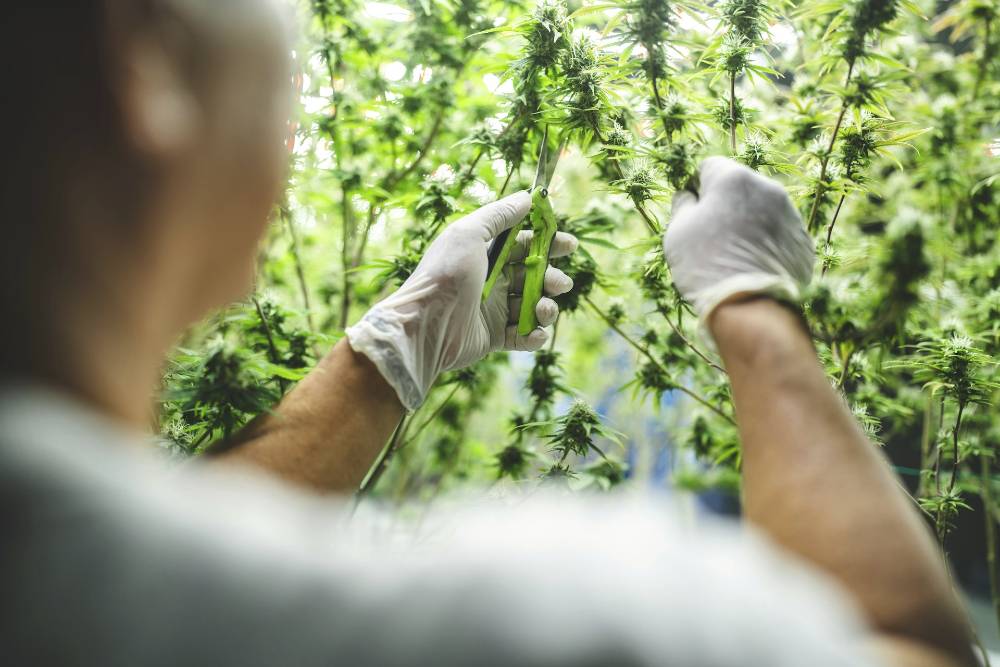In fashion, sustainability has taken center stage, challenging designers and consumers to rethink their choices in materials and practices. Among the champions of this green revolution, hemp stands out—not only for its environmental benefits but also for its versatility and durability.
As we delve into sustainable fashion, let’s explore how hemp, a cannabis derivative, transforms the industry and why it might just be the fabric of the future.
Contents
Hemp 101
Hemp is a wonder crop. It grows quickly, requires little water, and doesn’t need pesticides or herbicides to thrive. Unlike water-intensive cotton, which often relies on chemicals, hemp presents a sustainable alternative that’s kind to the planet.
But it’s not just hemp’s eco-credentials that make it a star in sustainable fashion; it’s also incredibly durable, resulting in clothing that lasts longer and reduces waste. This combination of sustainability and durability makes hemp an attractive option for designers looking to reduce their environmental footprint.
The Versatility of Hemp in Fashion
Hemp’s application in fashion is impressively versatile. It can be woven into everything from lightweight summer dresses to sturdy denim, making it suitable for a wide range of garments. Its natural texture adds a unique aesthetic to clothing, offering an earthy, organic look that’s become increasingly popular among eco-conscious consumers.
As technology in hemp fabric production advances, it’s becoming softer and more comparable to traditional fabrics like cotton, broadening its appeal. This adaptability paves the way for the organic fashion revolution, where style and sustainability meet.
Hemp’s Role in Circular Fashion
Circular fashion is about creating garments that can be reused, recycled, or composted, minimizing waste and promoting sustainability. Thanks to its biodegradable nature, Hemp plays a crucial role in this movement.
When a hemp garment reaches the end of its life, it can be composted, returning valuable nutrients to the soil and completing the natural cycle. This contrasts sharply with synthetic fibers, which can take hundreds of years to break down in landfills.
By incorporating hemp into their collections, designers offer sustainable options to consumers and contribute to a more circular fashion ecosystem.
Innovations in Hemp Fabrication
The textile industry is witnessing groundbreaking innovations in hemp processing, making it softer, more colorful, and versatile than ever before. Technological advances have enabled manufacturers to blend hemp with other fibers like organic cotton, silk, and wool, enhancing its texture and appeal without compromising durability.
These innovations mean hemp is no longer just for rugged wear but is now a contender in luxury fashion, capable of producing everything from the finest linens to the coziest knits. As these technologies evolve, hemp’s potential in the fashion industry continues to grow, promising a future where fashion looks good and does good for the planet.
Cannabis and Wellness in Fashion
As the fashion industry embraces sustainability, it also recognizes the wellness benefits of plant-based products, including cannabis. Beyond textile use, cannabis, particularly in legalized areas, offers a unique synergy with fashion, promoting a lifestyle that values wellness and conscious living.
And with marijuana being legalized in many states, as you get dressed, consider using cannabis as a way to calm down before a big event or party.
Today, there are strains as unique as your sense of style, like Pink Lemonade, Cake Breath, or MAC 1, all offering something different for the user’s needs at the moment. This integration of wellness into fashion reflects a holistic approach to sustainability, where what’s good for the Earth is also good for its inhabitants.
The Global Hemp Fashion Movement
The global hemp fashion movement is gaining momentum, with designers from Paris to Tokyo incorporating hemp into their collections. This international embrace has diversified the hemp fashion market and helped dispel myths surrounding the material.
High-profile fashion shows featuring hemp-based collections challenge preconceived notions about sustainable fabrics, showcasing their potential to lead the industry toward a greener, more sustainable future.
As the movement grows, it fosters a global conversation about sustainability in fashion, encouraging consumers and designers worldwide to make more eco-friendly choices.
Consumer Shift Towards Sustainable Choices
The rise of hemp in fashion coincides with a broader consumer shift towards sustainability. Today’s shoppers are more informed and conscious about their purchases, seeking brands that align with their values.
The demand for sustainable, ethically produced fashion is rising, and hemp is at the forefront of this shift. Consumers are drawn to hemp for its environmental benefits and durability, making it a smart choice for those looking to reduce their carbon footprint without sacrificing style or quality.
This changing consumer landscape pushes more brands to consider hemp and other sustainable materials, marking a significant shift in the fashion industry’s priorities.
The transformation of hemp from a misunderstood crop to a cornerstone of sustainable fashion is a testament to the industry’s capacity for innovation and change. As we continue to explore the benefits and possibilities of hemp, the future of fashion looks more sustainable and more inclusive of wellness and conscious living.
The journey towards a greener wardrobe is an ongoing process, and with hemp leading the way, we’re reminded that true style is timeless, especially when it’s kind to the planet.



